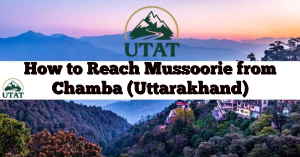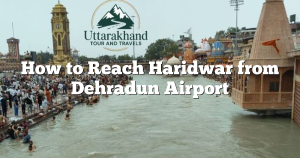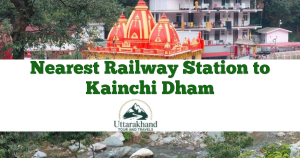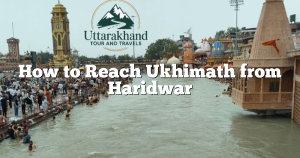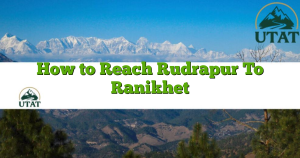Uttarakhand, often called “Devbhoomi” or the “Land of Gods,” is a state of breathtaking beauty nestled in the Indian Himalayas. It’s broadly divided into two distinct regions: Garhwal and Kumaon. Both are incredibly picturesque, offering a unique blend of spiritual solace, thrilling adventure, and serene natural landscapes. When it comes to deciding which is “more beautiful,” it’s truly a matter of personal taste and what kind of experience you’re seeking. Each region boasts its own charm, attractions, and cultural nuances.
Let’s explore the distinct characteristics of Garhwal and Kumaon to help you decide which one might capture your heart more.
Which is More Beautiful: Garhwal and Kumaon?
The question of which is more beautiful: Garhwal and Kumaon often arises for those planning a trip to Uttarakhand. The truth is, both regions are stunning, but their beauty manifests in different ways. Garhwal appeals to those seeking dramatic, high-altitude grandeur and profound spiritual experiences, while Kumaon offers a gentler, more serene landscape characterized by lush valleys and tranquil lakes.
Garhwal: The Land of Lofty Peaks and Sacred Pilgrimages
The Garhwal region, located in the western part of Uttarakhand, is often associated with towering, majestic mountains, rugged terrain, and deep spiritual significance. It’s a magnet for pilgrims and adventure enthusiasts alike.
Natural Beauty of Garhwal
Garhwal’s landscape is characterized by its dramatic and imposing Himalayan ranges. Here’s what makes it visually stunning:
- Majestic Peaks: Garhwal is home to some of India’s highest and most revered peaks, including Nanda Devi (India’s second-highest peak entirely within the country), Trishul, Kamet, and Chaukhamba. The sheer scale and grandeur of these snow-capped giants are truly awe-inspiring.
- Glaciers and River Origins: This region is the source of India’s most sacred rivers. The Gangotri Glacier is the origin of the Bhagirathi River, which later becomes the Ganga. The Yamunotri Glacier is the source of the Yamuna River. These glacial landscapes offer a raw, untouched beauty.
- Deep Valleys and Gushing Rivers: The terrain features deep, often narrow, valleys carved by powerful rivers like the Alaknanda, Bhagirathi, Mandakini, and Yamuna. The sight and sound of these gushing rivers add a dynamic element to the scenery.
- Alpine Meadows (Bugyals): While generally rugged, Garhwal also boasts stunning alpine meadows like Bedni Bugyal and Auli (which transforms into a skiing paradise in winter). These vast expanses of green, dotted with colorful wildflowers, offer panoramic views of the surrounding peaks.
- Waterfalls and Confluences (Prayags): Numerous waterfalls cascade down the mountainsides, especially during and after the monsoon. The sacred confluences, or ‘Prayags,’ where different rivers meet (like Devprayag, Rudraprayag, Karnaprayag, Nandprayag, and Vishnuprayag), are not only spiritually significant but also visually captivating.
Key Attractions in Garhwal
- Char Dham Yatra: This pilgrimage circuit, comprising Yamunotri, Gangotri, Kedarnath, and Badrinath, is entirely within Garhwal. These holy sites are nestled amidst spectacular Himalayan backdrops, combining spiritual devotion with stunning natural beauty.
- Rishikesh & Haridwar: These twin cities are the gateways to the Garhwal Himalayas and major spiritual centers. Rishikesh, the “Yoga Capital of the World,” offers the serene Ganga, iconic suspension bridges (Lakshman Jhula, Ram Jhula), and vibrant Ganga Aarti ceremonies. Haridwar is renowned for its Har Ki Pauri ghat and the daily Ganga Aarti, a spectacle of light and faith.
- Valley of Flowers National Park: A UNESCO World Heritage Site, this breathtaking valley explodes with thousands of vibrant alpine flowers during the monsoon months (July-August). It’s a trekker’s paradise, offering a kaleidoscope of colors against a backdrop of snow-clad peaks.
- Auli: Known for its pristine ski slopes in winter, Auli offers panoramic views of Nanda Devi and other peaks. In summer, it transforms into a lush meadow, perfect for leisurely strolls and photography.
- Mussoorie: The “Queen of Hills,” Mussoorie is a popular hill station offering colonial charm, Mall Road walks, and views of the Doon Valley and Himalayan ranges.
- Dehradun: The state capital, known for its pleasant climate, educational institutions, and various attractions like Robber’s Cave and Sahastradhara.
- Chopta & Tungnath: Known as “Mini Switzerland of India,” Chopta is the base for the trek to Tungnath, the highest Shiva temple in the world, and further to Chandrashila peak, offering 360-degree views of the Himalayas.
Best For:
- Pilgrims: Those undertaking the Char Dham Yatra or seeking deep spiritual experiences.
- Adventure Seekers: Trekkers, mountaineers, river rafters, and skiers.
- Panoramic Views: People who are mesmerized by towering snow-capped peaks and vast, rugged landscapes.
- Spiritual Retreats: Those looking for yoga, meditation, and serene ashram experiences.
Kumaon: The Land of Serene Lakes and Verdant Valleys
The Kumaon region, located in the eastern part of Uttarakhand, presents a softer, more verdant beauty. It’s famous for its tranquil lakes, charming hill stations, lush forests, and rich cultural heritage.
Natural Beauty of Kumaon
Kumaon’s landscape is characterized by its gentler slopes, dense forests, and an abundance of water bodies:
- Lake District: Kumaon is famously known as the “Lake District of India.” It boasts a series of picturesque lakes, with Nainital’s Naini Lake being the most prominent. Others include Bhimtal, Naukuchiatal, Sattal, and Khurpatal, each offering unique charm and activities.
- Rolling Hills and Green Valleys: The hills in Kumaon are often characterized by rolling tea gardens, dense pine and oak forests, and lush green valleys, giving it a very soothing and verdant appearance.
- Apple Orchards and Terraced Fields: You’ll find numerous fruit orchards, especially apple orchards, which add to the picturesque quality of the landscape. Terraced fields carved into the hillsides are a common and beautiful sight, showcasing the traditional farming practices.
- Wildlife Sanctuaries: Kumaon is home to diverse wildlife, including the renowned Jim Corbett National Park, which protects a wide variety of flora and fauna, including the Royal Bengal Tiger.
- Rivers and Streams: While not home to the major origins of the Ganga or Yamuna, Kumaon has its own network of beautiful rivers like the Kosi, Gomti, and Sarayu, along with numerous smaller streams.
Key Attractions in Kumaon
- Nainital: The most famous hill station in Kumaon, centered around the beautiful Naini Lake. It offers boating, cable car rides, and panoramic viewpoints like Snow View and Tiffin Top.
- Almora: A cultural heartland of Kumaon, known for its rich heritage, ancient temples (like Nanda Devi Temple), and stunning views of the Himalayan range. It’s often praised for its tranquility and traditional Kumaoni architecture.
- Ranikhet: A peaceful cantonment town surrounded by pine and oak forests, offering serene walks, a golf course, and magnificent views of the Nanda Devi peak.
- Mukteshwar: A quiet and charming hill station known for its Shiva temple, fruit orchards, and stunning views of the Himalayas, including the Panchachuli peaks. It’s perfect for a peaceful retreat.
- Kausani: Often called “Switzerland of India” for its striking resemblance, Kausani offers breathtaking 300 km panoramic views of Himalayan peaks like Trishul, Nanda Devi, and Panchachuli. It’s also known for its tea gardens.
- Bageshwar: Home to the ancient and holy Bagnath Temple, situated at the confluence of the Gomti and Saryu rivers. It’s known for its spiritual importance and beautiful setting.
- Jim Corbett National Park: India’s oldest national park, offering thrilling wildlife safaris and a chance to spot tigers, elephants, and a variety of birds.
- Pithoragarh: Known as “Mini Kashmir,” Pithoragarh offers stunning views of the Himalayan peaks and is a gateway to the famous Kailash Mansarovar Yatra.
- Jageshwar: A cluster of over 100 ancient Hindu temples, known for their exquisite stone carvings and serene atmosphere, dating back to the 7th to 14th centuries.
Best For:
- Nature Lovers: Those who appreciate lush greenery, tranquil lakes, and dense forests.
- Relaxing Holidays: Ideal for family vacations and peaceful getaways in charming hill stations.
- Wildlife Enthusiasts: A must-visit for safaris and birdwatching.
- Cultural Exploration: Those interested in experiencing Kumaoni culture, local crafts, and ancient temples.
- Photography: Offering diverse landscapes, from misty lakes to vibrant forests, perfect for capturing scenic beauty.
The Verdict: Which is “More Beautiful”?
As a rewriting expert, I must emphasize that the idea of one being “more beautiful” than the other is entirely subjective. It depends on what you define as beautiful and what kind of experience you are looking for:
- If your idea of beauty leans towards grandeur, spiritual austerity, towering snow-clad peaks, and adrenaline-pumping adventures, then Garhwal will likely captivate you more. It’s the land of the Char Dhams, the challenging treks, and the awe-inspiring heights.
- If you find beauty in serenity, lush green valleys, shimmering lakes, charming hill stations, and a more laid-back atmosphere, then Kumaon will undoubtedly steal your heart. It’s the epitome of gentle Himalayan charm.
Many travelers choose to experience both regions, as they are distinct yet complementary, offering a complete picture of Uttarakhand’s diverse beauty. You could plan a trip that combines the spiritual intensity of Garhwal with the tranquil charm of Kumaon, making for an unforgettable journey through the “Land of Gods.”
Ultimately, both Garhwal and Kumaon are jewels of the Himalayas, each radiating a unique kind of beauty that calls to different souls. Your choice will simply reflect the kind of beautiful journey you wish to embark on


